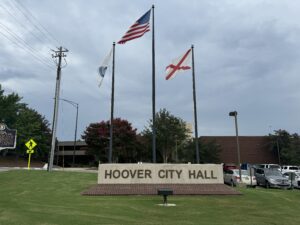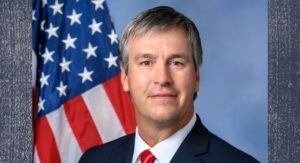Alabama leads nation in eliminating Chinese Communist Party influence in higher education

Lawmakers hailing from both sides of the aisle in Washington are shifting their focus to an increasingly relevant threat towards national security and academic freedom: Confucius Institutes. Funded by the Chinese Communist Party (CCP), these institutes have expanded to over 67 individual university campuses nationwide, with an additional 500 Confucius Classrooms at K-12 schools. Ambiguously labeled as cultural centers, Confucius Institutes have simultaneously proven themselves to be a vehicle of China’s political agenda through propaganda and intelligence gathering. Within these classrooms, historical events are only permitted to be discussed through a rosy lens towards the Chinese government, while documented events such as the 1989 Tiananmen Square protests, or the current human rights abuses against the Uyghurs, are prohibited from the entirety of classroom discourse. During a U.S. Senate Intelligence Committee hearing, Federal Bureau of Investigation (FBI) Director Christopher Wray confirmed that the FBI has observed China use “nontraditional collectors, especially in the academic setting” to engage in espionage and will continue to take “investigative steps” at Confucius Institutes. Additionally, the U.S. Department of State designated Confucius Institutes as “an entity advancing Beijing’s global propaganda and malign influence campaign on U.S. campuses and K-12 classrooms.” The state of Alabama has hosted two Confucius Institutes in its history; with established institutes at Alabama A&M University, Auburn University at Montgomery, and Troy University. Alabama A&M University’s Confucius Institute successfully closed in April 2021 after receiving notification of a potential loss of eligibility for federal funds. Other key actors in the state who advocated for the closure of Confucius Institutes include groups such as the College Republican Federation of Alabama as well as legislators Congressman Mo Brooks and State Representative Tommy Hanes (R-Bryant). Congressman Mo Brooks, a member of Alabama’s congressional delegation, was one of the initial Washington lawmakers to bring attention to the influence of Confucius Institutes. Brooks has served as an original cosponsor for the Higher Education Transparency Act, the Transparency for Confucius Institutes Act, the Foreign Influence Transparency Act, in addition to bipartisan effort, the Concerns Over Nations Funding University Campus Institutes in the United States (CONFUCIUS) Act. While the state of Alabama has made national headway in approaching the closure of Confucius Institutes within its state, not all of Alabama’s leading figures are zealous to join the national movement to limit foreign influence in the U.S. education system. Alabama House Bill 9 and Senate Bill 280, respectively, intended to cease funding of Confucius Institutes and were both opposed by Chair of the House Education Policy Committee, Terri Collins (R-Decatur), and Senator Jim McClendon. It was later revealed that Senator McClendon embarked on a 2015 Confucius Institute-sponsored trip to China. A number of former Alabama legislators, including a Troy University board of trustees member, also participated in the same Confucius Institute-sponsored international trip. Troy University continues to defend its relationship with its Confucius Institutes in a written statement, “Troy University’s association with the Confucius Institute has been positive, and we have seen no evidence of undue political influence from the Chinese government nor has there been any evidence of intellectual theft.” Time will tell if the state of Alabama will continue to lead the nation in defending national security and preserving academic freedom through the closure of the state’s last remaining Confucius Institute at Troy University.
Daniel Sutter: Are we running out of resources?

Thanksgiving began as a celebration of Nature’s bounty. Nature’s bounty includes natural resources. Despite reports to the contrary, Cato Institute research demonstrates that we still have plenty of natural resources. Human ingenuity and nature’s generosity explain why. That we must run out of oil, natural gas, and other resources seems obvious. Since we cannot manufacture deposits of oil, copper, zinc or other resources, these must surely get used up one day, right? News stories repeat this refrain. Fifteen years ago, news abounded of the end of cheap oil. We appeared to be running out of oil and natural gas during the energy shortages of the 1970s. Oil reserves were supposed to be gone by 2013. Yet we still have plenty of energy and minerals; U.S. oil production hit an all-time high in 2018. What happened? I’ll consider two factors. Reported resource reserves are proven reserves, or deposits of a known location, size, and quality. Dividing proven reserves by annual use gives the number of years of oil, copper, or whatever remaining. We have an estimated 53 and 46 years of oil and copper left. Proving the location and quality of reserves takes work. As economist M. A. Adelman emphasized, proven reserves are produced. Investing in proving reserves not needed for 100 years will lose money. We have found only a tiny fraction of the resources estimated to be in the Earth’s crust. New reserves will be found as existing ones are used. We might have 50 years of reserves remaining for decades. New and better methods of extraction increase effective reserves. Horizontal drilling and hydraulic fracturing have unlocked shale oil deposits. Earlier steam injection increased production from existing fields. Second, things only become resources when people figure out how to use them to produce goods and services. Saudi Arabia’s oil deposits generated no wealth for centuries. Knowledge is the ultimate source of value in our economy, and the mind is the source of knowledge. As economist Julian Simon put it, humans are the “ultimate resource.” Usually more than one formula or process can produce a good. When we are cooking, we can usually substitute for a missing ingredient and produce a tasty dish. We can use less of a resource if needed, or substitute something else; in the 1800s, people switched from whale oil to kerosene for lighting homes. We need not run out of resources because we can use alternatives if s specific mineral or fossil fuel runs out. Because reserves poorly measure resource availability, Cato’s index uses prices instead. Economic theory tells us that prices should reflect the best guesses concerning future discoveries, improvements in extraction, and emerging substitutes. If we are truly running out of something, its price should increase sharply. This was the basis for Julian Simon’s bet with Stanford University biologist Paul Ehrlich. In 1980, Simon let Ehrlich pick five resources that he thought were most likely to become depleted. Ehrlich selected chromium, copper, nickel, tin and tungsten; by September 1990, the prices had fallen and Simon won. The new Cato measure is accordingly called the Simon Abundance Index and uses fifty commodity and resource prices. Price comparisons over time require adjustment, most importantly for inflation. But since earnings rise in a growing economy, the Index also adjusts for income. This puts commodity prices in terms of time, say the number of hours of work required to buy ten gallons of gas. Simon Index prices fell 65 percent between 1980 and 2017 adjusting for inflation and earnings. When adjusting only for inflation, prices fell 36 percent. Over these years, world population increased by more than three billion persons. Markets found enough new reserves to accommodate population growth. Limits exist to Nature’s bounty, our ability to harvest this bounty, and for substitutes for resources. And we must consider fossil fuels’ impacts on pollution and climate change. Still, the Simon Index shows that we are not running out of resources. Because knowledge creates natural resources, we can potentially maintain a growing economy for generations to come. Daniel Sutter is the Charles G. Koch Professor of Economics with the Manuel H. Johnson Center for Political Economy at Troy University and host of Econversations on TrojanVision. The opinions expressed in this column are the author’s and do not necessarily reflect the views of Troy University.
Daniel Sutter: The games donors and universities play
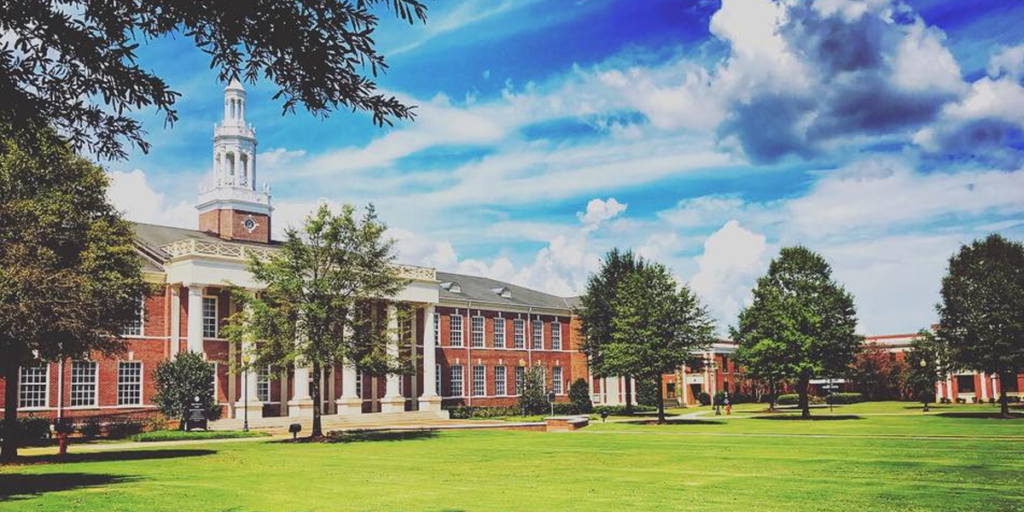
Controversies over gifts at two SEC schools, Alabama and Missouri, have recently attracted attention. The cases highlight the tension between donor goals and university administration and relate, I think, to conservatives’ increasingly dim view of higher education. Let’s consider the Alabama case first. In June, the trustees returned the largest single gift in school history, $26 million from Hugh Culverhouse Jr. (only $21 million had then been received). Mr. Culverhouse was the school’s largest donor; the business school is named for his late father, the long-time Tampa Bay Buccaneers owner, Alabama grad, and large donor. Alabama named the law school for Mr. Culverhouse. The return occurred after Mr. Culverhouse called for an out-of-state student boycott over Alabama’s new abortion law, but was apparently due to attempts to influence law school operations, allegedly including student admissions and faculty hiring. According to emails, Mr. Culverhouse may have had good intentions. He was unhappy with the quality of candidates for a constitutional law professorship and perhaps hoped that his gift could enable a hire to boost the law school’s national profile. The resolution here seems quite honorable; if you discover that you and your partners have irreconcilable expectations, you should shake hands and part ways. The Missouri case starts in 2002 with a $5 million gift from the estate of Sherlock Hibbs to fund professorships in Austrian economics. Instead Missouri funded positions for business professors with research unconnected to Austrian economics. This is where things get fascinating. Mr. Hibbs’ will included a provision that if the money were not used to hire Austrian economists, the gift would go to Hillsdale College instead. (Note to interested donors: Troy University has a strong program in Austrian economics!) Hillsdale recently sued to force the transfer, generating publicity. Missouri produced statements signed by the professors attesting that they are adherents of Austrian economics. Donors have long accused universities of using gifts to hire conservative and free-market professors for other purposes. I think this is related to the partisan decline in confidence in higher education. A 2019 Pew Center study found that 59 percent of Republicans held a negative view of higher education versus 33 percent positive, compared with 67 percent positive and 18 percent negative among Democrats. In 2015, 54 percent of Republicans viewed higher ed positively, versus 37 percent negatively. I do not believe that ignoring conservative donor intent caused this attitude shift. It likely reflects broader social forces and our general political polarization. Using gifts from conservatives to further liberal goals enables such an attitude change. What limits should be placed on gifts, or what kinds of influence should donors be able to buy? The recent college admissions scandal, with parents paying to get their children in some of our nation’s most prestigious universities, highlights these questions. (For full disclosure, the Johnson Center at Troy is supported by donors.) Professors, myself included, typically insist that admissions, curriculum, and hiring decisions be ours alone, and for good reason. We are the experts and know the most about judging faculty qualifications or different approaches in our fields. Being hired and tenured provides us specific responsibility for these decisions. State universities largely governed by faculty will better spend our tax dollars. The decision-making authority for universities though lies with the trustees or regents, as delegated to presidents or chancellors. And state universities ultimately belong to the taxpayers. Limiting faculty government is wise as professors’ views are at least somewhat biased by self-interest, and we have difficulty recognizing when we are clinging to unreasonable positions. Furthermore, our jobs provide us relatively little feedback about the contribution of our teaching and research to society. Reasonable people can disagree about the proper extent of donor influence. But accepting money under false pretenses is not right. In a perfect world, only the offenders’ names would be sullied; in our world, reputations are collective. Trampling donor intent damages the standing of higher education. Daniel Sutter is the Charles G. Koch Professor of Economics with the Manuel H. Johnson Center for Political Economy at Troy University and host of Econversations on TrojanVision. The opinions expressed in this column are the author’s and do not necessarily reflect the views of Troy University.
Daniel Sutter: Is a renewable electric grid a mirage?

Reducing greenhouse gas emissions to curb climate change will require enormous sacrifice. The enormity of the required sacrifice suggests that we should have consensus on the goal before acting. Recent discussions of the Green New Deal have highlighted some of the required sacrifices, but I suspect that the full implications of an all renewable power electric grid remain obscure. The Green New Deal was sponsored by New York Congresswoman Alexandria Ocasio-Cortez and Massachusetts Senator Edward Markey. The proposal highlighted measures like a renewable energy electric grid, eliminating greenhouse gas emissions in transportation (including phasing out air travel), and creating a smart electric grid. Limiting atmospheric carbon dioxide to 440 ppm, the European Union’s goal, will require these changes and then some. Assessing whether aggressive mitigation of climate change is worthwhile requires recognizing the full cost. An all renewable energy electric grid appears feasible. Over thirty states already require a minimum portion of electricity generation from renewable sources; Hawaii will require 100 percent renewables by 2040. Renewable fuels are certainly costly, but the consequences go way beyond cost. Wind and solar power and batteries are the components of a zero emissions grid. Yet wind and solar generate power only about 30 percent of the time. Currently utilities rely on fossil-fuel-powered plants to provide backup; a zero emissions grid will require batteries. The Manhattan Institute report, “The ‘New Energy Economy’: An Exercise in Magical Thinking,” demonstrates the flaws of such an approach. One concern involves simply building enough wind farms and solar panels to meet electricity demand. In 2018, the U.S. had 1.1 million megawatts of electricity generation capacity, 62 percent from natural gas and coal. Due to intermittent production, we would need perhaps 3 million megawatts of wind or solar capacity for the grid. If we used only wind turbines, we would need a wind farm larger than Texas. We would need perhaps 1.5 million turbines, each requiring 150 acres for an undisturbed flow of air, or 350,000 square miles. Even this is almost surely an underestimate. Wind energy potential maps have already allowed use of the best wind farm sites. Electricity demand has been steadily rising and would jump further to charge the electric cars, trucks, and trains and eliminate gas and diesel powered vehicles. The battery numbers are also troubling. One year’s production of batteries from Tesla’s “Gigafactory” can store enough power for the U.S. grid for three minutes. The “New Energy Economy” report contends that 1,000 years of “Gigafactory” production would be needed to store just two days of power. Producing such quantities of turbines, solar panels, and batteries will use enormous quantities of fossil fuels. A standard wind turbine requires an estimated 900 tons of materials, including concrete and metal. The lithium, cobalt, nickel, and other needed chemicals for solar panels and batteries must be mined and transported. In addition, turbines, panels and batteries will need replacing periodically. The power grid has long operated on adding capacity to meet demand. Millions of decisions have been made based on this principle. We assume we can power our air conditioners, refrigerators, and computers, and soon charge electric cars in a timely fashion. Gas-powered generators provide backup as needed. A zero emissions grid will not just involve much more expensive electricity. The supply of electricity will be insufficient to meet the demand. “Smart” appliances will ration electricity by running only when electricity is available. After ensuring hospitals and fire stations have power, we may be unable to charge our cell phones and electric cars. The ripple effects will be enormous. How do we get to work if our electric car didn’t charge overnight? How will we heat and cool our homes? Could global supply chains still operate? The Green New Deal has highlighted some of the dramatic changes required to aggressively combat climate change. But I doubt that Americans understand the consequences of ending on-demand electricity. Daniel Sutter is the Charles G. Koch Professor of Economics with the Manuel H. Johnson Center for Political Economy at Troy University and host of Econversations on TrojanVision. The opinions expressed in this column are the author’s and do not necessarily reflect the views of Troy University.
Daniel Sutter: Why go to college?

More than three million students will begin college this year, many pursuing degrees needed for high paying jobs. Amazingly, bachelor’s degrees open economic doors despite little evidence of significant learning in college. How can students who retain so little knowledge make so much money? A college degree can identify people who employers want to hire. A recent book by George Mason University economist Bryan Caplan provocatively titled The Case Against Education argues that this signaling explains much of the college earnings premium. The college earnings premium is real. According to the Bureau of Labor Statistics, in 2018 college grads earned 64 percent more than high school grads who never attended college, and 39 percent more than associate’s degree holders. College grads are also less likely to be unemployed, with a 2.2 percent unemployment rate, versus 4.1 percent for high school grads. The earnings and unemployment differentials have both persisted for years. Businesses require bachelor’s degrees for many jobs. Every time a business chooses college grads, they pay more. Profit-hungry businesses should not hire more expensive workers unless they create more value. Economics offers two theories for education’s value. The first, called human capital, contends that learning makes workers more productive. In the human capital story, the college curriculum must be directly valuable to employers. High paying degrees, like economics, must teach skills businesses value more. Alternatively, college degrees might allow students to signal characteristics which businesses desire; the content of degrees may be largely irrelevant. Life offers many examples of signaling. Romance and courting involve numerous signals, like engagement rings. A diamond is of little practical value, but signals the willingness to make a life-long commitment. What does college signal? Professor Caplan argues three main traits: intelligence, conscientiousness, and conformity. Businesses desire workers who are smart, able to learn challenging material, and willing to follow rules. Conformity is probably becoming more important, as businesses can no longer afford workers who tell off-color jokes or express racial, religious or sexual intolerance. Intelligence and ability to learn are valuable because the details of jobs differ greatly across employers. Employers must train workers to do a job their way. Employees must be willing to turn off their cell phones and pay attention. How important is human capital versus signaling? Discussions of higher education policy generally presume human capital theory. Yet Professor Caplan contends that the college premium is about 80 percent signaling and 20 percent human capital. The content of education clearly has some relevance; engineering firms will not hire inexpensive social work majors over expensive engineers because they prefer graduates already familiar with engineering. Professor Caplan presents a wealth of statistical evidence in support of signaling. Yet several puzzles demonstrate signaling’s importance. Perhaps most telling is the one mentioned above, the lack of evidence on long-term learning. Knowledge forgotten – of Shakespeare, calculus, or supply and demand – cannot be generating productivity. Furthermore, a student who is one or two classes short of a degree has acquired perhaps 95 percent of a degree’s human capital, but will face a significant salary penalty. And attending classes allows acquisition of knowledge without earning college credit, and has essentially no market value. Signaling creates value for the economy even if course content is largely irrelevant. College helps employers find the workers they want. Yes, four years of college is costly, but everyone wants high paying jobs and would likely lie during an interview. Whether higher education provides efficient signaling depends on whether an alternative can separate high and low quality potential workers at a lower cost. The potential exists for excessive and wasteful signaling. Completing high school used to separate one from the crowd. Arguably we now use college degrees as a signal instead of high school diplomas. Credential inflation is potentially costly. For parents of college students, signaling offers some solace. Even if Sally or Johnny seem to forget everything after the semester ends, passing forgettable classes can readily signal employers their willingness to learn a boring job. Daniel Sutter is the Charles G. Koch Professor of Economics with the Manuel H. Johnson Center for Political Economy at Troy University and host of Econversations on TrojanVision. The opinions expressed in this column are the author’s and do not necessarily reflect the views of Troy University.
Maxwell AFB reserve unit dedicates C-130 aircraft to Troy University

Maxwell Air Force Base’s 908th Airlift Wing, an Air Force Reserve Command, celebrated the “Trojan Warrior Spirit” on Tuesday when they unveiled a C-130 Hercules airplane with Troy University “nose art.” The artwork was revealed during a ceremony at Troy’s Municipal Airport Tuesday that designated the plane “The Trojan Warrior Spirit.” “We’e got several of our C-130’s that are dedicated to state universities. We’ve got one from the university of Alabama, one from Auburn University, and now we’ve got Troy University added to the mix,” explained Colonel Don Richey of Maxwell Air Force Base during the ceremony according to the Alabama News Network. “This is one of the most famous and venerable aircraft in the storied history of the Air Force,” said retired Air Force Maj. Gen. Walter Givhan, Senior Vice Chancellor for Advancement and Economic Development and a former command pilot according to Troy Today. “We are certainly honored to have this aircraft at Troy Municipal Airport on the ramp with the opportunity to dedicate it as the Trojan Warrior Spirit.” According to the U.S. Air Force, the C-130 is workhorse of the Air Force combat airlift fleet and the C-130 Hercules has been in service for more than half a century. Designed specifically to transport troops and equipment in the combat zone via airdrop or short runways, the Hercules operates throughout the U.S. Air Force fulfilling a wide range of operational missions in both peace and war situations. During Saturday’s football game against Coastal Carolina the airplane will fly over the stadium for Military Appreciation Day where the school will highlight the service of Vietnam veterans, as the C-130 played a prominent role in the Vietnam War.
Richard Shelby announces $3.2M grant for new research facility at Troy University

A $3.2 million grant has been awarded by the National Institute of Standards and Technology (NIST) to build a new research facility at Troy University. Alabama senior U.S. Senator Richard Shelby announced the grant Friday that will go to build the Center for Materials and Manufacturing Sciences (CMMS), which will serve as a facility for researching recycled plastic materials. “The new facility at Troy University will serve as an avenue for groundbreaking research, creating an environment for students to learn the issues involving polymers and develop impactful solutions for the plastics industry,” said Shelby. “I am confident that this funding will promote economic development throughout Troy and the surrounding area by training the workforce of the future.” The $3.2 million grant from NIST will provide Troy with a three-year grant to fund research involving the properties of polymers in plastics during the course of recycling and manufacturing. The new facility will give students the opportunity to learn about the issues and solutions related to plastics recycling. The work at the new center will be guided by an industry road mapping exercise and technical advisory board. The first phase of the funding is primarily intended to develop existing labs to include capabilities in polymer characterization, testing, and processing. CMMS will serve as a fully integrated multi-disciplinary research facility that will aid across majors and academic ranks. Undergraduate students will be encouraged to enter into research early in their academic career in order to develop a sustained and deeper understanding of the field. Faculty researchers and students will form the mainstay for the Center. The establishment of the center will facilitate and enhance Troy University’s present partnering with the local polymer and plastics industry in order to increase competitiveness in the marketplace. This will assist in improving the targeted industries’ ability to retain and increase job production while also allowing for expansion of products and markets – both locally and globally.
Five things you need to know about Gerald Dial
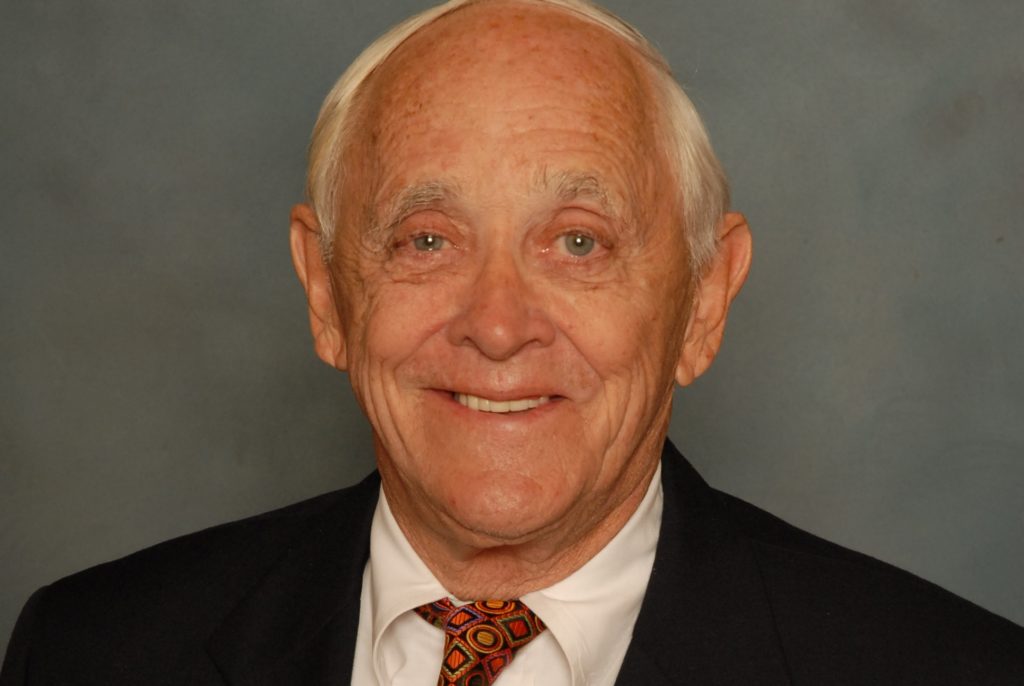
The primary elections are over, but some highly sought spots still remain open due to the primary races resulting in runoffs. One of those races is for the Commissioner of Agriculture and Industries seat. Incumbent Agricultural Commissioner John McMillan announced in January he would not be seeking reelection, opting for a run for State Treasurer instead. Four candidates stepped-up to the plate seeking election in the June 5 Republican primary. Former state Sen. Gerald Dial and Lowndesboro Mayor Rick Pate both garnered enough support to tip the race into a a runoff election set for July 17. With that in mind, here are the five things you need to know about Gerald Dial: 1. He served 37 years in the military, retiring in 1997 as an Assistant Adjutant General of the Alabama National Guard Dial joined the Alabama National Guard in 1959, over the course of his 37 year career in the military he attended the Alabama Military Academy and the Engineering Officers Basic Course. In 1968 he also completed the rigorous training required to become a United States Army Ranger, and was ranked as the Assistant Adjutant General of the Alabama National Guard when he retired in 1997. 2. He served in the state legislature as both a senator and a representative. In 1974 Dial was elected to serve as a Representative to the Alabama House, a position he held for one term. After his term as a representative, Dial sought election to the Alabama State Senate District 13 in 1983 and won. He then held his position until 2006 coming back to the race in 2010 to win the district back. This year, instead of seeking re-election, he’s joined the race for Agricultural Commissioner citing his 44 years of service in the Alabama Legislature as enough experience for the job. 3. He’s currently one of the President’s pro tempore at Troy University. Then governor Guy Hunt appointed Dial to the Troy University Board of Trustees in 1991 where he now serves as President pro tempore for Area 5. “Sen. Gerald Dial is one of the best public servants that I have met throughout my life in Alabama,” Troy Chancellor Dr. Jack Hawkins Jr. told the Trojan News Center. “For 26 years he has served as a member of the Troy University Board of Trustees and he has served well. Leadership in its truest sense is about pulling people together and focusing them in a common direction. Sen. Dial is the essence of a servant leader and one of whom we can all be proud.” 4. He was appointed by former governor Bob Riley to serve as the Executive Director of the Alabama Rural Action Commission. Dial served as the Executive director of the Alabama rural action commission from 2007 to early 2018, he was appointed for the position by then governor Bob Riley. According to his campaign website, while serving in this position, Dial “helped secure grants for infrastructure improvements, rural broadband initiatives, and community development.” 5. He financed his campaign through his timber business Pate, Dial’s opponent claimed he was the only farmer in the primary race, but Dial says that’s not true. “I am a farmer as well,” Dial told AL.com. “I financed my campaign off of timber.”
Women of Influence: Autism Society of Alabama VP Dr. Caroline Gomez
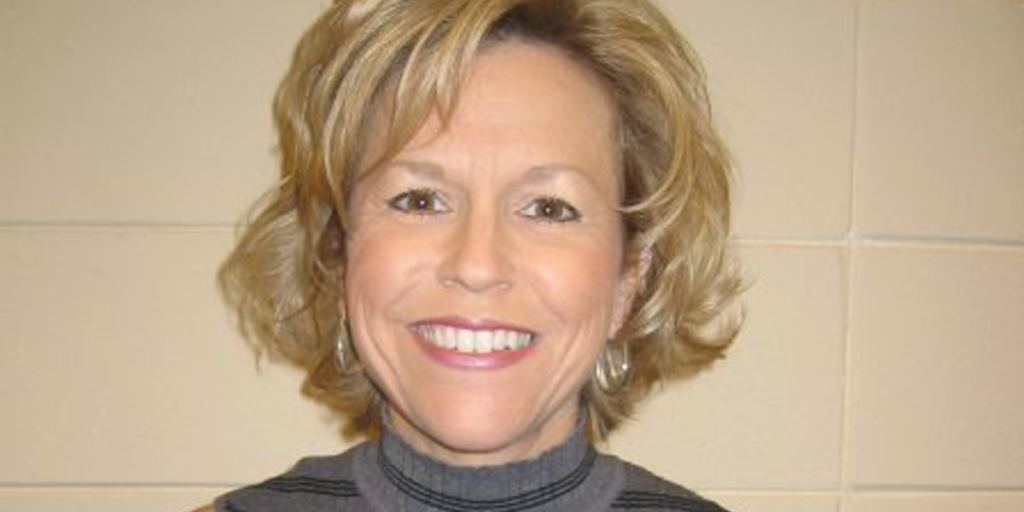
Dr. Caroline Gomez is an Autism Spectrum Disorder (ASD) sage; working within the ASD community for over three decades, Gomez is determined to advise, guide, and work directly with those who would help and serve individuals with ASD. A Miami-native, Gomez spent most of her college and working career in the Yellowhammer state. Receiving her first degree, a bachelors in Special Education, from Troy University in 1983, she worked as a special education teacher at several schools within in the state until 1987. She then moved back to Florida for a brief stint as an elementary school teacher and team leader, before moving to Texas to begin working on her Master’s degree in Special Education, (including an Autism specialization) at Our Lady of the Lake University in San Antonio, Texas. Earning her Master’s degree in 1995, Gomez moved across the pacific to Tachikawa, Japan where she worked as an English instructor for the Yokogawa Engineering Corporation while also working as an Autism Inclusion Consultant at the Yakota Elementary school on the Yakota Air Base. Continuing her education even further, Gomez moved back to the state of Alabama to earn her Ph.D. in Rehabilitation & Special Education, with a specialization in Autism, from Auburn University. While working on her Ph.D., Gomez continued to work with several different schools, and a mental health center until she started her own private practice in 2001, Autism Diagnostics, Consultation, and Training which she still maintains today. But she didn’t stop there, we’re only in the early 2000’s, and she only gets more impressive from here on in… In 2003 she earned her Ph.D, and became the co-director of the Auburn University Autism Center, overseeing and delivering several programs and services including: a model demonstration site for best practice education for children with ASD training for families, teachers, and related professionals outreach consultation services research opportunities relative to effective intervention strategies for children with ASD In 2007, Gomez took a position as Director of the Autism Hope Center in Georgia until 2009, when she relocated back to the Yellowhammer state. That year, Gomez was named the first ever Autism State Coordinator for the state. There, she led the Alabama Interagency Autism Coordinating Council and worked with then-Gov. Bob Riley to meet recommendations set forth by the Alabama Autism Task force. She continued to work as the state coordinator for two years, before jumping back into the private sector in 2011 to work as an autism diagnostic and consultation specialist at Glenwood Mental Health, Inc. in Birmingham, where she provided and planned program recommendations to Alabama school systems, a position she has held to this day. Gomez was also awarded the Resolution Honoring Professional Achievement by the Alabama State Senate, the same year. In 2012, Gomez added Adjunct Professor at the University of Alabama in Birmingham to her already impressive resume, and became a full-on Professor, teaching online courses, at the American Public University System in 2013, a position which she still maintains to this day. During all of her long work history, Gomez has somehow managed to serve on several boards including the: National Network of Autism Training and Technical Assistance Programs (NATTAP) (2009-2015) Alabama Disabilities Leadership Coalition (2010- current) Lee County Autism Resource and Advocacy (2014- current) Alabama Annual Autism Conference Planning Committee (2007-current) Autism Society of Alabama (2004-2009; 2012- current) This year Gomez was selected to serve as Vice-President for the Autism Society of Alabama, a title she also held in 2009. She is a truly remarkable woman, who has spent a majority of her lifetime leading and encouraging others to serve those that some of us, whose lives are not affected by ASD, might forget; and was kind enough to answer some of Alabama Today’s questions about her life, work, and influences. How have other women influenced your success? I have been fortunate to have extraordinary women mentor me throughout my career. Dr. Consuelo Bossey at Our Lady of the Lake University in San Antonio Texas encouraged me to become an expert in autism spectrum disorder (ASD). At the time, the ASD prevalence rate was 1 in 500 children. Today, the ASD prevalence rate is 1 in 59 children. Dr. Bossey’s urging became my life’s work. Dr. Samera Baird, Auburn University Professor Emerita, guided me with patience and enthusiasm through my doctoral program and a national research project to identify earliest indicators for ASD. I truly want to be just like her when I grow up! However, I will always admire and adore two strong women above all others. My mother, Rita Crawford, has always been my example and pillar of strength. She raised four children with little support and no complaint all while assuaging any of our worries. My great aunt, El Notaro, who had to drop out of school to work after the 8th grade, proudly earned her high school diploma at age 65. She epitomized tenacity and grace in the face of adversity, even after losing both of her legs. My mother and Aunt El were strong women who told me I could do anything, and I believed them! What shaped your desire to work with special needs kids, specifically children with autism? I honestly always wanted to be a teacher. My two younger sisters could not escape my practice for my future career. I was also drawn to children with challenges. My first year as a special education teacher was exciting and terrifying. Special education had only been a federal mandate for seven years and to say that I was not prepared would be an understatement. However, I was always willing to raise my hand and ask for help when needed and I have continued that practice. That willingness gave me had the opportunity to learn from experts in other fields like speech-language pathology and occupational therapy. When I began my special education teaching career, the prevalence rate for ASD was 1 in 2,500 children. ASD was so rare that it was never mentioned in my undergraduate special education program. Darius, a three year old in my first classroom, introduced me
Daniel Sutter: The End of the Allentown Economy

A Remarkably Prescient Song Over 35 years ago during the 1981-82 recession, Billy Joel released “Allentown” about the plight of this Pennsylvania town. The song resonated across the Midwest during the worst economic downturn since the Great Depression. It also anticipated, I think, an important change in our economy and society. I was in high school in suburban Detroit when “Allentown,” and Mr. Joel could easily have been singing about our troubles. Unemployment in Pennsylvania topped out at 12.7 percent in the recession, while Michigan hit 16.4 percent. Something seemed fundamentally wrong. Fortunately, the U.S. economy recovered, and growth exceeded 7 percent in 1984. President Reagan’s reelection slogan, “It’s morning in America” suggested that the dark days were behind us. His tax cuts and low inflation were beginning to unleash the Reagan-Clinton prosperity. Prosperity never brought back all the auto, steel, or coal jobs. The causes were many, but the largest was automation. America manufactures as much as ever, just with many fewer workers than in the 1970s. Now artificial intelligence (AI) may automate 800 million jobs worldwide. Sources of long term, stable employment are vanishing, and AI will accelerate the automation of routinized tasks. In the future, tasks may be automated before hundreds of thousands of workers are hired to do them. This does not mean the end of work, because our wants and desires for goods and services exceed our productive capacity, and always will. Our households and businesses inevitably have tasks that we’d like done. Humans will be useful, only our jobs will be more fleeting. “Allentown” foreshadows the social impact of these changes. The lyrics state: “For the Pennsylvania we never found, For the promises our teachers gave, If we worked hard, If we behaved.” These words reflect an implicit deal: follow directions from teachers (and I would add parents and bosses), and you will be taken care of. I shouldn’t really say taken care of, because the lyrics also mention hard work. Hard work in coal mines, steel mills, and auto plants and helped create the prosperity which workers shared. The middle class, post-War America lifestyle wasn’t a gift from employers, unions, or the government, but a share of the wealth created. This deal worked because many jobs required on-the-job training but little specific expertise. The skills of a high school graduate sufficed, if people followed the boss’ directions. The gig economy and freelance writer epitomize today’s workplace, and now more people must manage their “careers.” Americans waiting to be told where to go to work hard are struggling in a changing world. Is anyone responsible for this change? Not really, just as no one designed the prior deal. Economist Adam Smith recognized the existence of spontaneous order in society; our institutions are often the product of human action but not design. The Industrial Revolution’s factories, railroads, and other industries needed workers, and economic and political freedom in England and America meant that people could not be forced into this work. A deal where owners and managers designed the workplaces and marketed the products while employees followed directions made all involved better off. The old deal is not being shut down by law, and traditional employment will never disappear entirely. One consequence of the ongoing spontaneous change is no official announcement that the old deal is no longer in effect. This probably worsens disillusionment and pain, as a long-successful way of approaching life just isn’t very successful anymore. President Trump’s proposed tariffs on steel and other imports are a response, I think, to this larger change. We can expect other actions as well, perhaps regulations to slow the introduction of self-driving vehicles to protect jobs. Tariffs and regulations, however, will likely be merely delaying actions. The good news is that automation will allow us to produce the goods and services we now have, plus many more. And many Americans are embracing freelance careers, perhaps because obeying the boss is often frustrating. The future is bright but will be different, and we must recognize the differences. ### Daniel Sutter is the Charles G. Koch Professor of Economics with the Manuel H. Johnson Center for Political Economy at Troy University and host of Econversations on TrojanVision. The opinions expressed in this column are the author’s and do not necessarily reflect the views of Troy University.
Troy University hosts special session of Alabama Supreme Court for landmark case

The Alabama Supreme Court held a special session at Troy University on Wednesday, where it heard two cases. Most noticeably was the landmark care of Jessie Livell Phillips v Alabama. The case dates back to June 2012 when Jessie Phillips, 32, of Albertville, was convicted in of killing his wife, Erica Droze Phillips, who was eight weeks pregnant with their unborn child. He was sentenced to death. Phillips is now appealing the case, which was the first prosecution and conviction under Alabama’s Brody Act, which makes it a homicide to kill an unborn baby in an attack on its mother. Phillips was prosecuted in Marshall County by then District Attorney Steve Marshall. Marshall, now the Alabama Attorney General, was in attendance for oral arguments in the appeal The court regularly holds special sessions at various locations across the Yellowhammer State.
Bye bye birdie — creepy bird sculpture relocated in Alabama from Miami Dade College
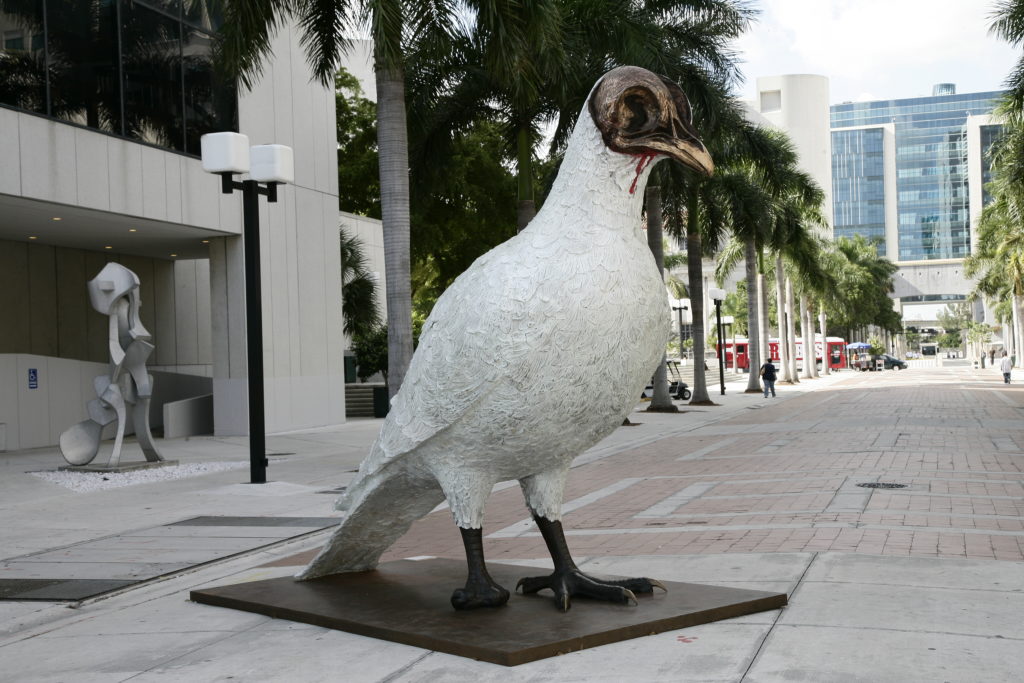
For over a decade, a creepy 13-foot tall bronze dove statue has graced the the Wolfson Campus of Miami Dade College. Named “Violata Pax Dove” or the “Wounded Peace Dove,” the bird truly embodied its name — it was both scalped and had a torn claw. It was on loan to the college courtesy of Alabama artist Fred “Nall” Hollis. Now, the bird has moved back home to Alabama where it’s been relocated to Troy University in Montgomery, Ala. across the street from the Rosa Parks Museum. “It was a sad ending to its visit,” Nall told the MDC Reporter.

